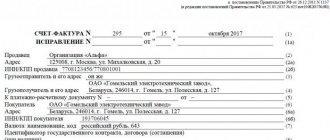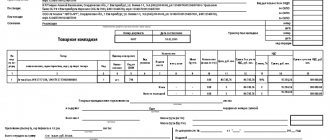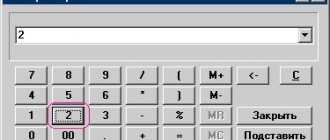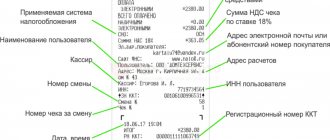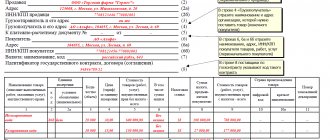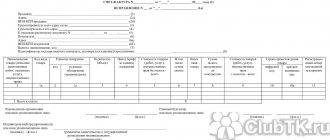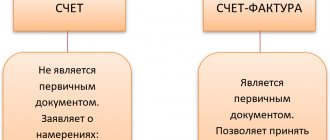Invoice and invoice
The contract may contain the procedure for payment for goods (work, services): exact deadline, deadline, installment payment, advance payment, etc. Therefore, an agreement containing a party’s obligation to pay for goods (works, services) is also the basis for payment. Since the Civil Code of the Russian Federation does not contain rules indicating the need or obligation to use an invoice - a payment request for calculations, the parties have the right to establish the procedure for settlements independently, that is, they can use an invoice - a payment request. If the agreement contains a direct reference to the use of a payment request when calculating an invoice, it is mandatory for the parties to this agreement, but does not exempt the obligated party from paying for the goods delivered (work performed, service rendered) based on the following. Fulfillment by the buyer (customer) of the obligation to pay for the supplied goods (work, services) is conditioned by the fulfillment by the other party of the counter obligation to supply these goods (work, services). Accordingly, the basis for the obligation to pay is the fact of delivery of goods (work, services), and not the fact of delivery of an invoice and (or) invoice. The absence of an invoice does not deprive the obligated party of the opportunity to make payments for the delivered goods (works, services) within the period established by the contract and in the established amount. Thus, failure by the seller (contractor, performer) to issue an invoice does not relieve the buyer (customer) from timely payment. The absence of an invoice cannot affect the buyer’s (customer’s) obligation to pay the cost of the goods (work, services) supplied. The basis for the obligation to pay their cost will be the fact of proper completion of the delivery (work, services). An invoice refers to tax documents, which it is within the meaning of paragraph 1 of Art. 169 of the Tax Code of the Russian Federation, according to which an invoice is a document that serves as the basis for accepting the presented amounts of tax for deduction or reimbursement in the manner prescribed by the Tax Code of the Russian Federation. Thus, an invoice is not just a business tool; This is a form of tax administration that can be accepted by agreement of the parties to the contract as a basis for payment for goods (works, services). In this regard, an invoice can serve as the basis for payment for goods (work, services), including in the absence of an invoice.
Answer
You can leave a comment on this topic after registering. Registered users have more options available. Go to registration.
Answer:
The concept of “primary accounting document”
defined by Art. 9 of Federal Law No. 129-FZ of November 21, 1996 “On Accounting”.
Common Mistakes
Errors that are most often encountered when filling out an invoice and their consequences:
- if the name, TIN, and address of the organization are incorrectly indicated or missing, it is difficult to establish the authorship and addressee of the document, so it may be declared invalid;
- if it is impossible to determine from the document what goods were transferred or service was provided, VAT will not be refunded;
- incorrect indication of currency, incorrect indication of the quantity of goods, errors in prices, incorrect calculation of cost lead to the fact that the exact cost of the goods cannot be determined. Thus, the document becomes uninformative;
- incorrect calculation of VAT. The absence of a VAT amount may also raise questions from regulatory authorities.
Minor errors in the form of missing characters, capital letters, or inaccuracies in payment details are usually not pursued by the tax authorities. It is also possible to abbreviate names if such an abbreviation allows you to identify the enterprise or product.
Payment by invoice
According to this article:
"1. All business transactions carried out by the organization must be documented with supporting documents. These documents serve as primary accounting documents on the basis of which accounting is conducted.
2. Primary accounting documents are accepted for accounting if they are drawn up in the form contained in the albums of unified forms of primary accounting documentation, and documents whose form is not provided for in these albums must contain the following mandatory details:
a) name of the document; b) date of preparation of the document; c) the name of the organization on whose behalf the document was drawn up; d) content of the business transaction; e) measures of business transactions in physical and monetary terms; f) the names of the positions of the persons responsible for the execution of the business transaction and the correctness of its execution; g) personal signatures of these persons. ...
4. The primary accounting document must be drawn up at the time of the transaction, and if this is not possible, immediately after its completion.”
Let's consider the compliance of the invoice with the listed characteristics of the primary document:
- an invoice is not a supporting document for any business transaction (for example, supporting documents for the purchase of goods, work and services are a bill of lading, a bill of lading, a certificate of work performed (services rendered));
- accounting entries generated on the basis of an invoice (Dt 68.2 19) are not an independent business transaction;
- albums of unified forms approved by the State Statistics Committee of the Russian Federation do not contain an invoice form.
However, the invoice contains the mandatory details of the primary accounting document established by the Federal Law “On Accounting”. In this case, the invoice in accordance with clause 3 of Art. 168 of the Tax Code of the Russian Federation, in contrast to the primary document, can be drawn up within 5 calendar days from the moment of shipment of goods (performance of work, provision of services), transfer of property rights or receipt of payment amounts, partial payment for upcoming deliveries of goods (performance of work, provision of services) , transfer of property rights.
Thus, with the exception of compliance of the invoice details with the mandatory details of the primary accounting document, other features of the primary document established by Art. 9 of the Federal Law “On Accounting” the invoice does not contain.
It should be noted that the provisions of the Tax Code of the Russian Federation also distinguish between the concepts of “invoice” and “primary document”
. Namely:
- according to paragraph 1 of Art. 169 of the Tax Code of the Russian Federation, an invoice is a document that serves as the basis for the buyer to accept goods (work, services), property rights presented by the seller (including the commission agent, agent who sell goods (work, services), property rights on their own behalf) VAT amounts to deduction in the manner prescribed by Chapter 21 of the Tax Code of the Russian Federation.
- in accordance with paragraph 3 of Art. 120 of the Tax Code of the Russian Federation, a gross violation of the rules for accounting for income and expenses and objects of taxation for the purposes of this article means the absence of primary documents, or the absence of invoices, or accounting or tax accounting registers...
Taking into account the above, an invoice is a document on the basis of which the amount of VAT is accepted by the buyer for deduction, and is not recognized as a primary document within the framework of accounting and tax legislation.
This opinion is also shared by the Ministry of Finance of the Russian Federation: in Letter dated June 25, 2007 N 03-03-06/1/392, financiers came to the conclusion that an invoice is a document that indirectly confirms expenses incurred and serves as an addition to existing primary documents .
Requisites
What does an invoice look like? This is a table with columns about the product and a header providing information about the parties to the contract.
Required details:
- number and date;
- name, address and tax identification number, checkpoint of the buyer and seller, as well as the shipper and consignee, if any (please note, according to the new rules, the address must be written strictly as it is indicated in the Unified State Register of Legal Entities, you can check it on the Federal Tax Service website in the “Check yourself and the counterparty” section) );
- number of the payment document if an advance was received for future deliveries;
- product name and unit of measurement;
- quantity;
- currency (ruble code - 643, US dollar - 840, euro - 978);
- price per unit of measurement;
- full cost;
- excise tax amount;
- tax rate;
- the amount of tax to be paid;
- total cost including taxes;
- country of origin of the goods (codes are set in accordance with the OK classifier (MK (ISO 3166) 004-97) 025-2001); if goods are produced in Russia, a dash is added;
- customs declaration number (if the goods were not produced in Russia);
- signatures of the manager and chief accountant (or an authorized person - by order or power of attorney) - on a paper document; enhanced qualified digital signature - on electronic.
Among the latest changes is the line
“Identifier of a government contract, agreement (agreement).” Applies to deliveries under government contracts. The Filling Rules specifically indicate that the line is filled only if there is an identifier. If absent, the line remains blank (there is no need to put a dash).
What does the bill look like?
An invoice for payment can hardly be considered in the general case a primary accounting document, since it does not formalize a business transaction (Clause 1, Article 9 of the Federal Law of November 21, 1996 N 129-FZ “On Accounting”): the shipment of goods is issued with an invoice, transfer of funds - by payment order. The invoice performs auxiliary functions: the supplier informs the buyer of the amount to be paid and additionally reminds of the timing of its transfer.
There is no unified form for payment invoices; organizations resolve this issue independently. Traditional account details include:
- details of the supplier - the recipient of the payment, namely name, INN, KPP, bank details (it is assumed that it is on the basis of the invoice that the buyer will draw up a payment order in the form approved in Appendix 1 to the Regulations of the Central Bank of the Russian Federation dated October 3, 2002 N 2-P “O” non-cash payments in the Russian Federation");
- buyer's details (usually only name);
- basis for payment (name, quantity of goods, details of the supply agreement);
- the amount to be paid (if a product is paid for, the sale of which is subject to VAT, the “input” tax is highlighted in the invoice);
- the deadline for paying the invoice (for example, “pay the invoice within 20 calendar days”);
- invoice expiration date (usually in prepaid invoices);
- date and account number (to identify the document);
- signature of an authorized person and seal of the supplier organization.
The legislation does not prohibit concluding transactions in conventional units (clause 2 of Article 317 of the Civil Code of the Russian Federation). This means that the invoice can also be drawn up in y. e. and contain an indication of the rate of conventional monetary units used by the parties (the official exchange rate on the date of payment or the rate fixed in the agreement).
For the purchasing organization, the invoice for payment usually performs a control function. For example , according to the internal document flow rules, a payment from a current account can only be made on the basis of an invoice from a supplier, endorsed by the financial manager. However, often the parties do without issuing invoices, because the amount of debt and payment terms are agreed upon in the contract. Most often, an invoice for payment is considered as a unilateral financial document, which in itself does not give rise to the rights and obligations of the parties.
Relevance
The 2021 sample invoice is a transfer document that must be drawn up taking into account the above rules. It must take into account changes made since 10/01/2017.
Let's summarize: invoice - what is it in simple words? In short, this is confirmation of payment and payment of VAT. There are peculiarities of filling out this form, advance or corrective, but the essence does not change. It is in this form that there are signatures of authorized persons who actually confirm the execution of the contract. Therefore, this is an extremely important document that it is advisable to include in contractual obligations. Payers on the general taxation system will also need proof of payment of value added tax.
Prepayment invoice as a contract
As a rule, in the supply agreement the parties stipulate the supplier’s obligation to issue an invoice for an advance payment or for payment for goods already shipped. Therefore, issuing an invoice is one of the actions of the supplier to fulfill its obligation under the contract.
However, there are situations when, due to the peculiarities of the organization of trade, issuing an invoice acts as an offer, and payment of the invoice is considered as acceptance of the offer (Resolution of the Federal Antimonopoly Service ZSO dated June 23, 2009 N F04-3677/2009(9195-A45-4), FAS UO dated October 21. 2009 N Ф09-8079/09-С3, FAS SZO dated 12/17/2008 N A56-9218/2008, FAS PO dated 02/12/2008 N A57-19204/05-15). So, according to paragraph 2 of Art. 437 of the Civil Code of the Russian Federation, an offer containing all the essential terms of the contract, from which the will of the person making the offer is discerned, to conclude an agreement on the conditions specified in the offer with anyone who responds, is recognized as an offer (public offer). In turn, the performance by the person who received the offer, within the period established for its acceptance, of actions to fulfill the terms of the contract specified in it (shipment of goods, provision of services, performance of work, payment of the appropriate amount, etc.) is generally considered acceptance (Clause 3 of Article 438 of the Civil Code of the Russian Federation). For example , trade organizations operating through electronic platforms post on their website an invitation to potential buyers to independently create an invoice (select the required goods, indicate the payment method, delivery method and other delivery conditions), print it and pay. Once the potential buyer has paid the invoice, the seller has an obligation to deliver the goods to him on the terms agreed upon in the invoice.
Note. In the described situation, the seller, as a rule, indicates the so-called validity period of the invoice, after which the invoice is canceled and payment received on it is not considered as acceptance of the offer and does not entail the emergence of a counter-obligation of the seller. This condition is dictated by the seller’s need to ensure the availability of the goods for which an invoice has been issued. By setting delivery dates in the invoice, the seller must meet them, therefore, he is forced to reserve the goods while awaiting payment from the buyer. If payment is not received within the period specified in the invoice, the goods are excluded from the reserve.
In this situation, the invoice is considered as a written form of the contract. However, for an invoice to become a contract, it must contain all the essential terms of the contract. In relation to the supply agreement - the condition of the product (name, quantity) and delivery time (for example, within ten days after receipt of payment on the invoice) <1>. In the absence of essential conditions in the invoice, issuing an invoice and its payment does not lead to the conclusion of an agreement (Resolutions of the Federal Antimonopoly Service of Moscow dated September 28, 2009 N KG-A40/9509-09, Ninth Arbitration Court of Appeal dated March 16, 2009 N 09AP-1882/2009, 09AP- 2292/2009).
<1> About the situation when an invoice agreement may give the buyer the right to deduct VAT paid as part of an advance payment, read the article “VAT on advance payment. Commentary of the Ministry of Finance", N 4, 2009.
The invoice agreement must also indicate all the buyer’s details identifying him as a party to the agreement. An invoice agreement should be considered as a document confirming expenses for the purposes of calculating income tax, provided that it meets the requirements for primary accounting documents.
We especially emphasize that the buyer has the right to pay only part of the goods indicated in the invoice (in the payment order, in the “Base of payment” column, the paid goods should be noted).
Is it necessary to indicate the payment order number in the SF?
In the event that clauses 5 and 6 of Art. 169 of the Tax Code of the Russian Federation regarding mandatory information included in the invoice, paragraph 2 of the same article comes into force.
According to its rules, invoices drawn up in violation cannot be grounds for accepting paid amounts for reimbursement or deduction for VAT (read about invoices without VAT here). But is the absence of payment order details a violation if the invoice is issued under an agreement without prepayment?
Here you need to be guided by the following. According to paragraphs. 4 p. 5 art. 169 of the Tax Code of the Russian Federation, the number is indicated if payments have been made towards future deliveries. This means that you need to fill out column 5 only if advance payments or full prepayment have been made (you can find out how to create an invoice for an advance payment here). If goods are shipped or services are provided without prepayment, then filling out the column with the document details and, in particular, the payment order number is not mandatory.
This issue was the subject of controversy for a long time until the Resolution of the Presidium of the Supreme Arbitration Court of the Russian Federation of March 10, 2009 No. VAS-10022/08 was issued. It officially stated the following position:
- If the shipment of goods, performance of work or provision of services and payment occur within one tax period for payment of VAT, the lack of information about payment documents will not be a violation.
- Incorrectly specified details cannot serve as a basis for refusing a refund or VAT deduction.
Thus, although the details of the document used for payment under the contract are an important part of the invoice, the absence of this data does not entail its invalidation. However, it is possible not to indicate details only if both shipment and payment are made within the same quarter , and only if delivery or rendering occurred earlier than payment. The difference between an invoice and an invoice can be found here.
Features of payment by invoice - all important information about this procedure
This action will still be considered an acceptance of the offer, and the contract is recognized as concluded in terms of paid goods, of course, in the absence of objections from the supplier regarding the number of goods to be transferred (Resolution of the Federal Antimonopoly Service ZSO dated 02.06.2009 N F04-3136/2009(7440-A45 -eleven)). This conclusion is based on paragraph 58 of the Resolution of the Plenum of the Supreme Arbitration Court of the Russian Federation No. 6, Plenum of the Supreme Arbitration Court of the Russian Federation No. 8 of 01.07.1996, according to which, in order to recognize the corresponding actions of the addressee of the offer as acceptance, the Code does not require fulfillment of the terms of the offer in full. For these purposes, to qualify the specified actions as acceptance, it is sufficient that the person who received the offer (including the draft contract) began to execute it on the terms specified in the offer and within the period established for its acceptance.
If the potential buyer pays the supplier part of the invoice amount, which cannot be qualified as payment for part of the goods, the contract cannot be considered concluded and the supplier is not obliged to transfer the goods to the buyer (Resolution of the Federal Antimonopoly Service NWO dated 10/12/2009 N A05-4696/2009).
In the situation under consideration, when the invoice is simultaneously considered as an agreement in writing, it is subject to the requirements of Art. 160 Civil Code of the Russian Federation. By virtue of clause 2 of this article, the use of facsimile reproduction of a signature using mechanical or other copying means, an electronic digital signature or another analogue of a handwritten signature when making transactions is permitted in cases and in the manner provided for by law, other legal acts or agreement of the parties. Therefore, the absence of an indication in the invoice that the use of fax is equivalent to compliance with the written form of the transaction entails the need to transfer the original invoice (with the “live” signature of the seller) to the buyer.
Basic information about filling out column 5
Information about payment orders in the invoice is recorded according to the following rules:
- The document number and the date of its issue are indicated.
- If there were several advance payments, the details of each are indicated. This is also possible when payment under a contract is received from two or more counterparties (co-customers, commission agent or agent, etc.). In this case, the details are separated by the sign “;”, semicolon.
- In cases established by the resolution of paragraphs. “z” clause 1 of the Filling Rules established by Decree of the Government of the Russian Federation No. 1137 of 2011, it is allowed to put a dash instead of the details.
Cases where a dash or blank line is allowed include the following:
- The delivery was carried out without prepayment, or shipment (using invoices) and payment (using a payment order) took place on the same banking day. In what cases is an invoice required? Read here.
- The supply or provision of services was carried out under a non-cash agreement.
Invoice as the basis for the obligation to pay
Very often, the parties enter into an agreement (whether it is a supply agreement or a contract for the provision of paid services) a condition that the buyer (customer) is obliged to pay for the goods (work, service) within the agreed period after the invoice is issued by the supplier (contractor, performer). And in the future, the obligated party (buyer, customer) does not transfer money in the absence of an invoice, regardless of the actual transfer of goods (performance of work, provision of services). As a rule, the creditor (supplier, contractor) is forced to go to court. Let's see how arbitrators qualify the absence of an invoice for payment. In particular, does it relieve the buyer from the obligation to pay for the goods?
To answer this question, it is necessary to establish whether the buyer (customer) had the opportunity to pay for goods (work, services) without receiving invoices from the supplier (contractor, performer). In other words, is the absence of an invoice after the parties have signed invoices for the transfer of goods, certificates of work performed, services rendered an obstacle to payment under the contract?
If the court determines that the fact of transfer and the cost of goods, works, services are confirmed in invoices, acts (bilateral documents signed by representatives of the parties and certified by the seals of organizations), the buyer (customer) does not have the right to evade payment, regardless of the presence or absence of an invoice (FAS Resolutions VVO dated 04/09/2009 N A39-3128/2008-138/21, FAS ZSO dated 05/21/2009 N F04-2923/2009(6367-A70-16), FAS MO dated 09/21/2009 N KG-A40/9159-09 , dated 06/16/2009 N KG-A40/5039-09, FAS PO dated 05/18/2009 N A57-19791/2008, FAS SZO dated 04/20/2009 N A56-46127/2008). In this case, liability measures will be applied to the debtor for failure to fulfill a monetary obligation; the period of delay is determined from the moment of transfer of goods, acceptance of the result of work, provision of services (Resolution of the Federal Antimonopoly Service of the Moscow Region dated August 11, 2009 N KG-A40/7477-09), unless otherwise established agreement <2>.
<2> For example , the buyer is obliged to make 100% payment for each batch of products in the amount according to the invoice, invoice, invoice of the supplier within 25 calendar days from the date of delivery (Resolution of the Federal Antimonopoly Service of the Moscow Region dated August 26, 2009 N KG-A40/7324 -09).
The fact is that the basis for the emergence of the customer’s obligation to pay for services by virtue of Art.
Art. 779 and 781 of the Civil Code of the Russian Federation is the fact of their proper provision. Similarly, the basis for the customer’s obligation to pay for work performed is the delivery of the result of the work to the customer (Articles 702, 740 of the Civil Code of the Russian Federation). In the same way, on the basis of paragraph 1 of Art. 486 of the Civil Code of the Russian Federation, the buyer is obliged to pay for the goods immediately before or after the seller transfers the goods to him, unless otherwise provided by the Civil Code of the Russian Federation, another law, other legal acts or a purchase and sale agreement and does not follow from the essence of the obligation (based on the general provisions of the Civil Code of the Russian Federation, based on According to the principle of compensation in civil legal relations, the receipt and acceptance of goods by one of the parties predetermines the obligation of the other party to provide consideration).
Meanwhile, in the case where the absence of an invoice is an obstacle to payment under the contract, the court considers the demands of the supplier (contractor, performer) to recover from the buyer (customer) the cost of goods (work, services) in case of non-compliance with the obligation to issue an invoice for payment stipulated in the contract, unfounded.
For example , the court recognizes that the debtor did not delay the fulfillment of the obligation if the beginning of the payment period by the parties is associated with the fact of issuing invoices (the contract states: payments for work performed are made by the client within three banking days from the date of invoice). In this situation, it is impossible to establish the beginning of the delay in fulfilling a monetary obligation; therefore, the debtor cannot be required to pay a penalty (Resolutions of the Federal Antimonopoly Service of the North-West District dated September 30, 2009 N A56-30104/2008, FAS Moscow Region dated January 20, 2009 N KG-A40/12867-08). This situation is especially typical for communication services (Resolution of the Federal Antimonopoly Service of the Moscow Region dated May 14, 2009 N KG-A40/3894-09).
Thus, suppliers who are unable to provide timely invoices may be advised not to include provisions in their supply agreements that make the buyer's obligation to remit payment amounts solely at the time of receipt of the invoice.
E.V. Ermolaeva
Journal expert
"Trade:
Accounting
and taxation"
Kinds
There are three main types of invoice:
- ordinary, shipping. This document confirms that the goods have been transferred. This is the most common type of invoice, but legislation provides for more than just one;
- advance payment, written out and drawn up upon concluding a contract and receiving an advance payment for work performed or services rendered. This form does not confirm the fact of transfer;
- adjustment, filled in when the price or quantity of shipped products changes.
Systematization of accounting
The rules that must be followed when signing up for management are explained in detail in many letters from the Ministry of Finance and the Federal Tax Service. Thus, quite recently, specialists from the financial department again drew the attention of taxpayers to the fact that authorized persons must sign “in the invoice details “Head of the organization” and “Chief accountant”, after the signature the surname and initials of the authorized persons should be indicated without indicating their positions and details of powers of attorney issued to them" (Letter of the Ministry of Finance of Russia dated January 21, 2008 N 03-07-09/06). At the same time, officials make a reservation: if positions and details are nevertheless written, this is not a violation of the procedure for filling out invoices. The conclusion suggests itself: “you can’t spoil porridge with butter.”
The payment order is issued simultaneously in several copies, which must be identical. The number of copies that must be submitted to the bank depends on how the payment is made; usually 3 or 4 copies are submitted (one copy each for the payer, payer's bank, buyer, buyer's bank).
Accounting for settlements with customers at Stimul-2 LLC
The bank returns the last copy of the payment order to the client indicating the date of acceptance of the order. In this case, this copy is affixed with the stamp of the bank and the signature of the operational employee who accepted the order for execution.
The payment order is issued simultaneously in several copies, which must be identical. The number of copies that must be submitted to the bank depends on how the payment is made; usually 3 or 4 copies are submitted (one copy each for the payer, payer's bank, buyer, buyer's bank). No corrections are allowed when filling out a payment order.
What data should I write on line 5?
In practice, indicating the details in the invoice may look like this:
- Under the agreement, full prepayment was made: “To payment and settlement document No. 324 dated December 11, 2018.”
- Several payments were made: “... No. 421 dated 10.10.2018; No. 235 dated 10/05/2018.”
- The product is delivered without prepayment: “... No. – from –”.
Only a correctly completed invoice is the basis for VAT deduction. Details of the PP or other document used to make the payment is information that is mandatory in most cases. Therefore, the accountant preparing the invoice needs to ensure that this information is indicated correctly - except in cases where the law allows not to indicate details in the document.
